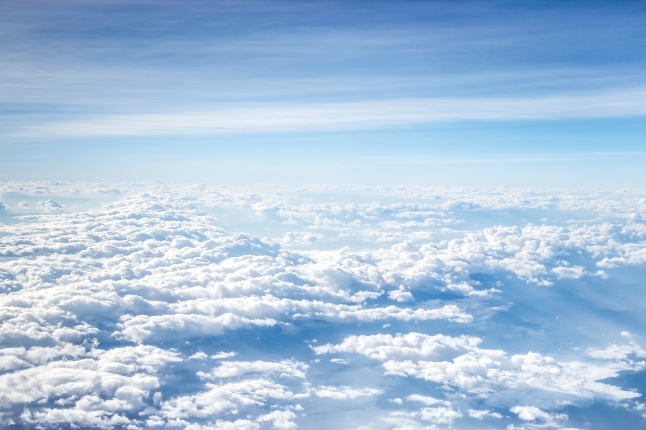News
The GOAmazon field campaign will enable scientists to study the intricacies of the natural state of the Amazon rainforest atmosphere and land systems, and how these may be perturbed by human influences such as pollution and deforestation. (Photo courtesy of the ARM Climate Research Facility.)
Cambridge, Mass. – February 26, 2014 – The Amazon Basin in South America includes the most biodiverse tract of tropical rainforest on the planet, covering 5.5 million square kilometers. Due to the sheer size of the Amazon rainforest, the area has a strong impact on the climate in the Southern Hemisphere and is a primary driver of global atmospheric circulation.
Officials from the U.S. Department of Energy (DOE) have opened a new two-year field study of the Amazon Basin to study and model tropical climate processes within a systems context. Led by scientists from Harvard University and Lawrence Berkeley National Laboratory, more than 100 researchers from the United States, Brazil, and Germany are involved in the field and modeling experiments based in Manaus, Brazil.
Scot T. Martin, Gordon McKay Professor of Environmental Chemistry at the Harvard School of Engineering and Applied Sciences (SEAS), will provide scientific leadership for the Atmospheric Radiation Measurement (ARM) Climate Research Facility located in Manacapuru, Brazil. Three Ph.D. students and a postdoctoral researcher from Harvard will also be closely involved in this project.
Data obtained during the Green Ocean Amazon, or GOAmazon, field campaign will enable scientists to study the intricacies of the natural state of the Amazon rainforest atmosphere and land systems, and how these may be perturbed by human influences such as pollution and deforestation.
 An atmospheric observation tower, as viewed through the foliage below. (Photo courtesy of the ARM Climate Research Facility.)
An atmospheric observation tower, as viewed through the foliage below. (Photo courtesy of the ARM Climate Research Facility.)
“Manaus is a great test bed. It’s an isolated urban region with 2,000 kilometers of forest around it,” Martin told the Harvard Gazette last August. In “most places, there are so many possible pollution sources, it’s very difficult to dissect and interpret the data. Here, it’s a much more straightforward experiment, given there’s only one major pollution source.”
Scientific instrumentation placed at several sites throughout the Amazon Basin will continuously measure clouds, aerosols, solar and thermal energy, and moisture above and below the surface. These data will be supplemented with airborne measurements obtained by research aircraft during two distinct seasons, and measurements of forest–atmosphere interactions from the soil surface to the canopy. The opening marks the start of the first phase of research flights occurring in February–March 2014; the second phase takes place September–October 2014.
“We anticipate notable scientific results from this large international experiment,” said Sharlene Weatherwax, associate director of science for biological and environmental research (BER) at DOE. “Since this research spans several of our research priorities, we have marshaled the resources from six BER programs. We are delighted to participate in a partnership with Brazilian and German research organizations to focus on common research goals for this climatically important region.”
First Step: Data Collection
Industries in the megacity of Manaus, as well as the 3 million people who inhabit it, use high-sulfur oil as their primary source of electricity. High emissions in the resulting pollution plume are in direct contrast to the thousands of kilometers of pristine rainforest surrounding the city.
The GOAmazon field campaign places scientific instruments at several locations around Manaus to observe and measure the natural rainforest environment, as well as the pollution outflow from the city.
DOE observational resources include:
- ARM Climate Research Facility. Located at Manacapuru, southwest and downwind of Manaus, the ARM Mobile Facility includes dozens of instruments for measuring cloud and aerosol properties, trace gases, precipitation, and energy coming down from the sun and up from the earth. As the primary observation site, this scientific user facility is also hosting guest instruments from other research institutions to measure the hydrologic cycle—the continuous movement of water, on, above, and below the surface of the Earth—in the Amazon Basin. In addition, ARM’s Aerial Facility is conducting the research flights over the sites in the spring and fall.
- Environmental Molecular Sciences Laboratory (EMSL) Facility. Located with the ARM Mobile Facility, EMSL’s high-resolution time-of-flight mass spectrometer will provide quantitative submicron measurements of the size and chemical composition of aerosol particles.
- Terrestrial Ecosystem Science (TES). Located in the rainforest north of Manaus, this site is hosting instruments to measure carbon, water, solar radiation, and the emission of biogenic volatile organic compounds above and beneath the forest canopy. Instrumented locations around Manaus will measure the natural environment, as well as emission outflow from the city.
Next Step: Analysis
As data from GOAmazon begins rolling in, researchers will begin conducting analyses and modeling studies to better understand land-to-atmosphere processes in the Amazon rainforest and how these processes, including human influences, affect tropical hydrology and climate. DOE research support includes:
- Atmospheric System Research. Research will be conducted to improve understanding of the following: the life cycle of aerosols including the interaction of pristine and polluted air masses; the interaction of aerosols and clouds, including aerosol impacts on precipitation and tropical convective processes, as well as cloud impacts on aerosol transport, chemistry, and removal; and the evolution of tropical convective systems and the processes driving these transitions.
- Earth System Modeling. An example of research projects in this area is“ACES4BGC” which focuses on improving the terrestrial-atmospheric carbon cycle in the Community Earth System Model.
- Regional and Global Modeling. To advance the predictive understanding of Earth’s climate variability and change at regional and global scales, researchers will evaluate robust methods to obtain higher spatial resolution models and diagnose and analyze the state-of-the-science for coupled climate and Earth system models.
- Terrestrial Ecosystem Science. Researchers will measure and model forest-atmosphere fluxes of carbon, water, energy, and biogenic aerosols and how interactions among these are expected to change with a warming climate.
DOE national laboratories with a key role in GOAmazon science and operations include Brookhaven, Lawrence Berkeley, Los Alamos, and Pacific Northwest.
##
About the DOE Office of Science
DOE’s Office of Science is the single largest supporter of basic research in the physical sciences in the United States, and is working to address some of the most pressing challenges of the time. For more information, please visit http://science.energy.gov.
Adapted from an original release by the Office of Science.
Atop the Amazon rainforest
Learn more about environmental fieldwork in Brazil.

Topics: Environment, Climate
Cutting-edge science delivered direct to your inbox.
Join the Harvard SEAS mailing list.
Scientist Profiles
Scot T. Martin
Gordon McKay Professor of Environmental Science and Engineering and Professor of Earth and Planetary Sciences
Press Contact
Caroline Perry



